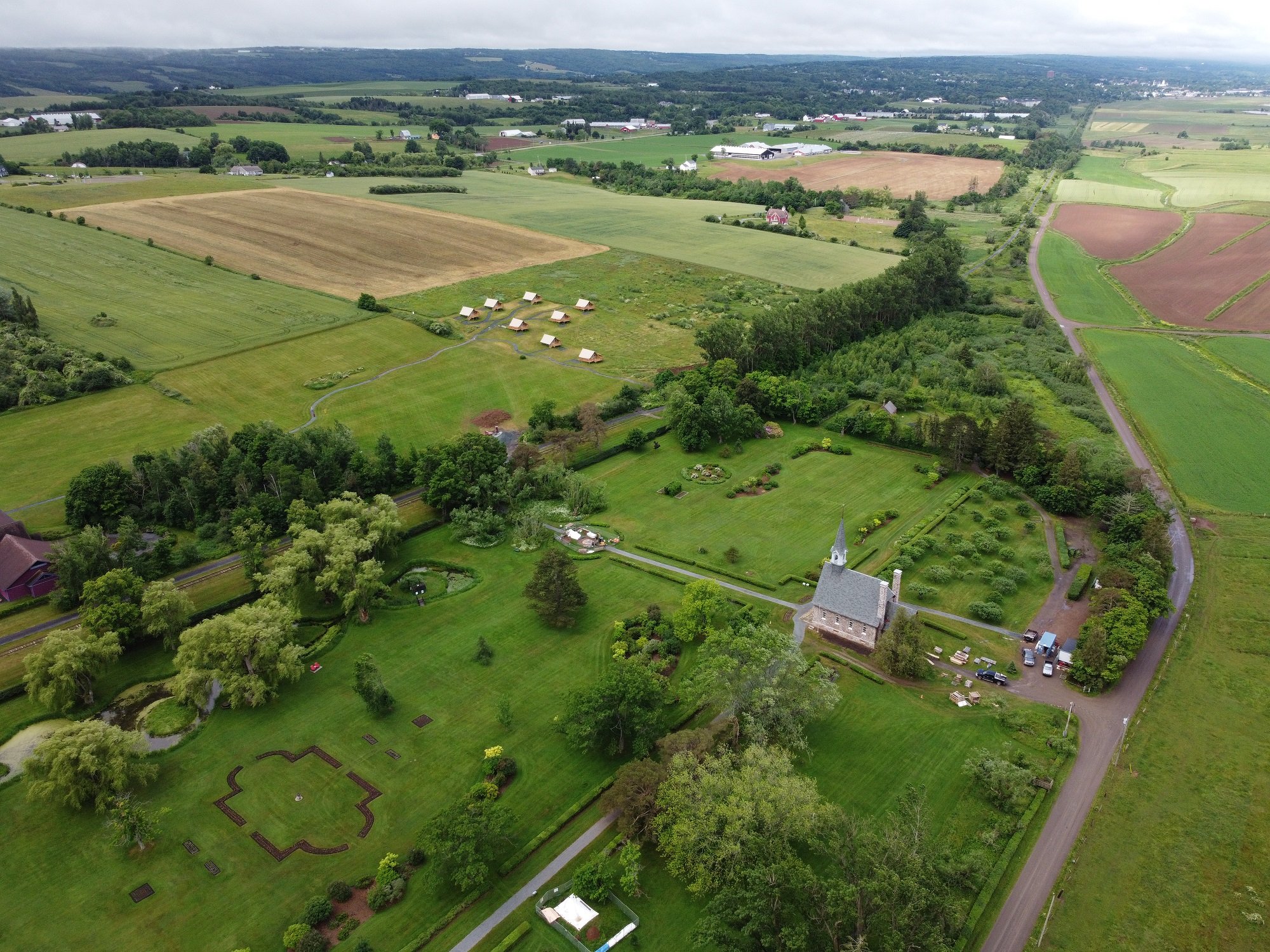Born and raised in the Annapolis Valley, Adeena Fox BA’20 didn’t fully appreciate Grand-Pré’s global significance until she got a chance to do archaeology field research there as a Saint Mary’s University student.
“I grew up about 20 minutes away. I didn’t realize how much history we have in our province, let alone in a place so close by,” says Fox, an Honours Anthropology graduate now completing her master’s degree in Atlantic Canada Studies.
Aerial shot of Grand-Pré
Nova Scotia Heritage Day on February 21 honours the Landscape of Grand Pré, which marks its 10th anniversary this year as a UNESCO World Heritage Site, one of just 20 in Canada. It’s an iconic place of memory due to the Acadian deportation of 1755, a human history that echoes throughout 1,300 hectares of tidal marshes, historic dykes and farmland along the Minas Basin.
“It’s a special place,” Dr. Jonathan Fowler says in a new documentary by the Fédération acadienne de la Nouvelle-Écosse. “It is an example of human ingenuity over centuries because it's a place where humans have tested their wits against nature's great forces of the Fundy tides.”
An historical archaeologist, Fowler has been researching early colonial “Acadie” for nearly 30 years, and teaching the Grand-Pré Archaeological Field School course at Saint Mary’s since 2001. His modern archaeology toolkit goes far beyond excavation, emphasizing terrestrial and aerial remote sensing technologies such as ground-penetrating radar, electromagnetic induction, LiDAR and digital texture mapping technologies.
For Fox, a field school highlight was searching for evidence of a mysterious stone house that played a key role in the 1747 Battle of Grand-Pré. “It’s one thing to read about archaeological sites but to be right there, putting that knowledge to use, it’s truly indescribable,” she says.
Artifact found at Grand-Pré
Grand-Pré’s broader landscape has been a constant source of inspiration for Wesley Weatherbee BA’17, first as an undergraduate student and research volunteer, then in several field courses, and now as the central focus of his master’s thesis.
“It is a beautiful place to investigate,” says Weatherbee, who graduates in May. He’s intrigued by the depth of natural and cultural history combined, beginning with the Mi’kmaq long before the French, British, Scottish or Dutch settlers arrived. See these 3D models he created of a historic pipe and the Grand Pré excavation site where it was found.
“Any visitors to the coast have the opportunity to see ancient fossils in the Triassic sandstone underlying the sandflats, Pleistocene wave-cut terraces rising above the modern shorelines, 4,000-year-old ancient forests still rooted on the flats, eroding remnants of Acadian farm infrastructure, and much more,” he says.
Spencer Ryder BA’22 of Hampton, New Brunswick graduated in January with a major in Anthropology and a minor in Classics. This fall he heads to Italy’s University of Padua, to begin a Master of Applied Sciences to Cultural Heritage Materials and Sites program.
“I knew I wanted to be an archaeologist since middle school, but really had no idea how you become one,” he says. “The courses I took at Saint Mary’s, especially ones where we were able to work in the field, get our hands dirty and find artifacts, made me fall in love with history even more.”
Grand-Pré’s landscape is fertile ground for exploring such timely topics as colonialism, settlement, conflict and displacement, he adds. A favourite project was at an Indigenous site near Starr’s Point, just west of Grand-Pré. Ryder and classmate Emily Madinsky BA’20 helped to plot and excavate trenches, collect materials and conduct research, then co-wrote a report with Fowler for the provincial Department of Communities, Culture and Heritage.
“Being able to work on a project from start to finish showed me how future projects may go when I am employed professionally in the field of archaeology,” Ryder says.
Find information about Saint Mary’s anthropology programs, news and events here. Learn more about Grand-Pré by following Dr. Fowler’s research updates on Twitter at @ArchInAcadie, and on Facebook at Archaeology at Grand-Pré and Archaeology in Acadie.



